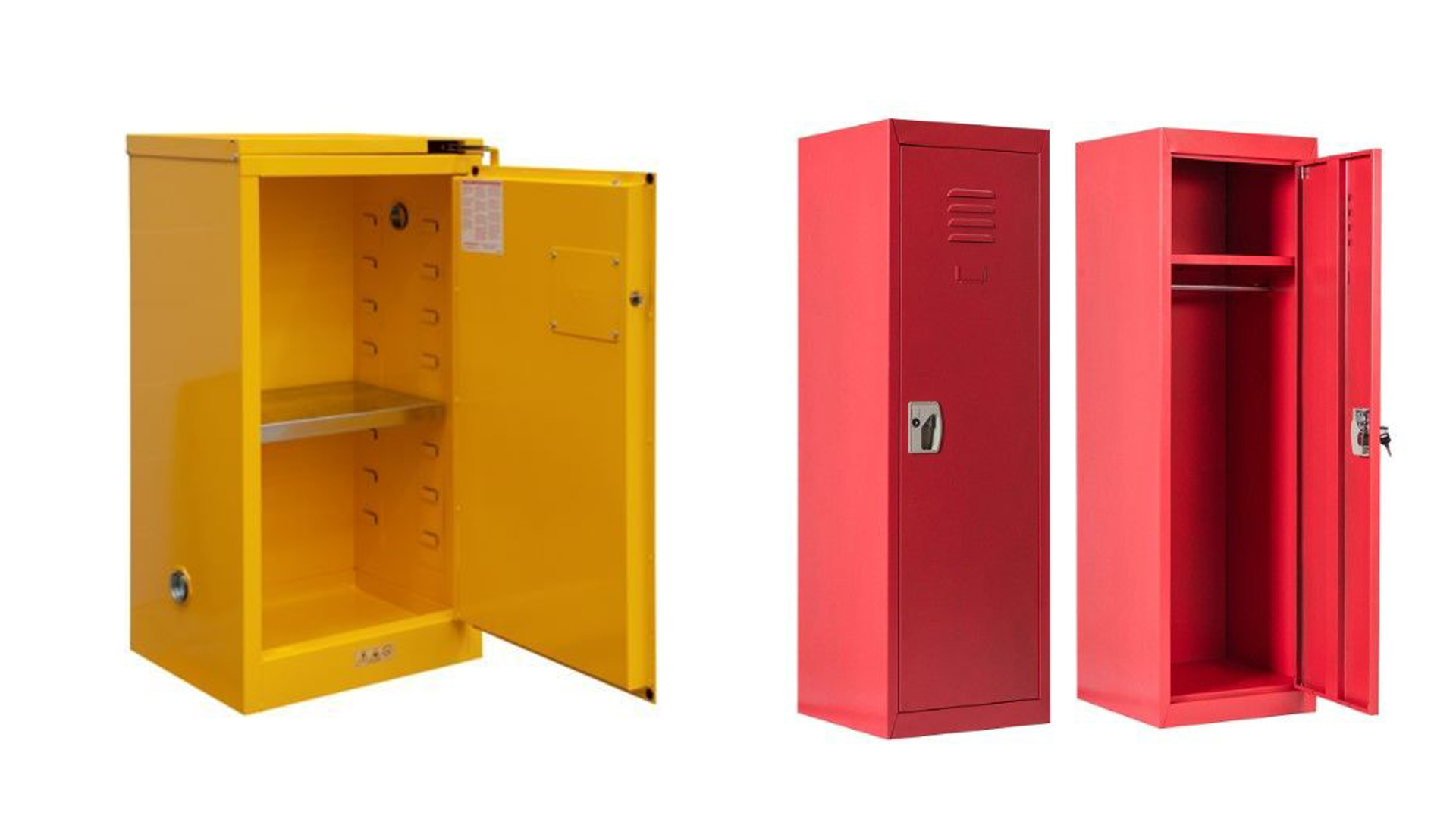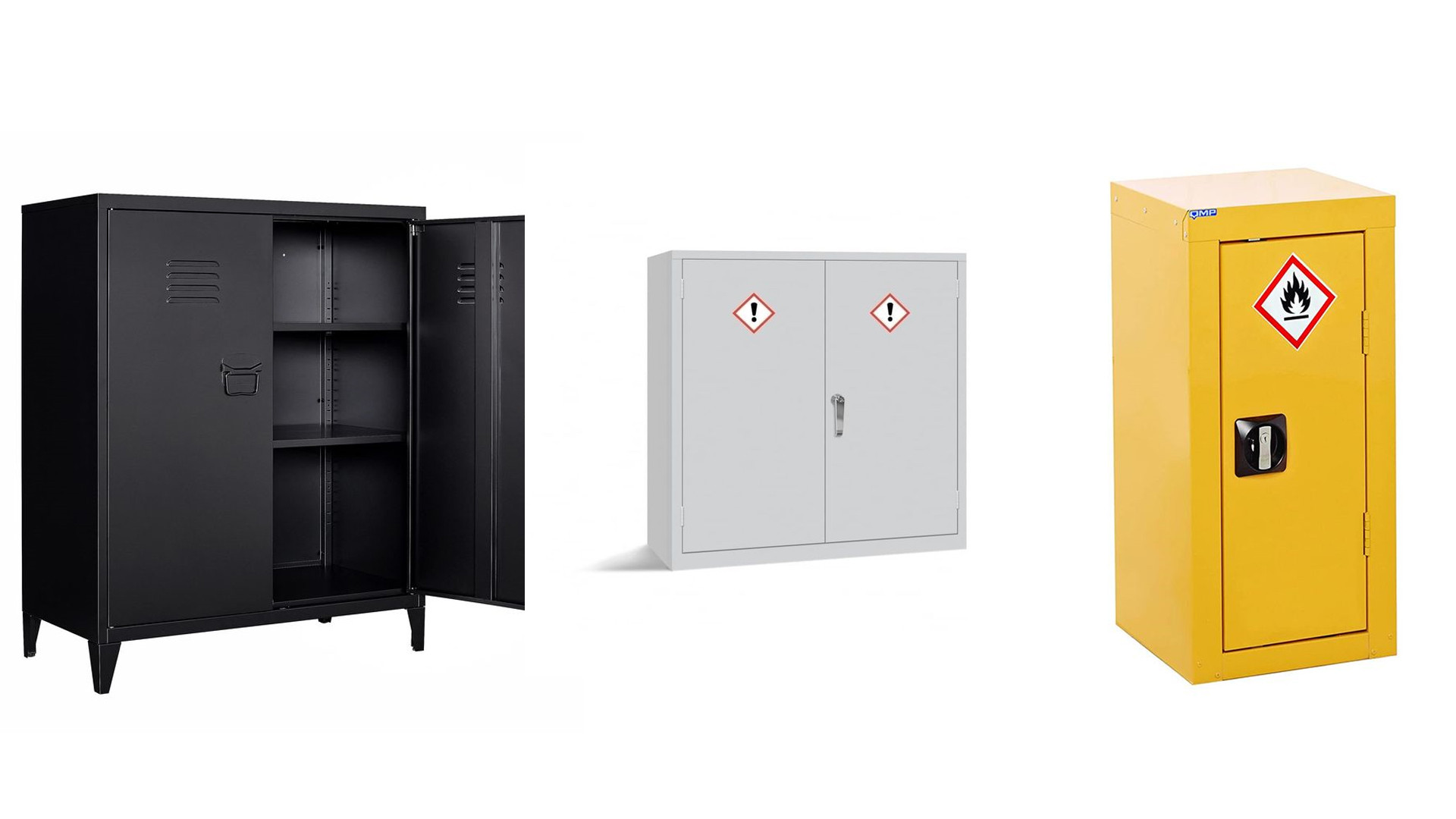Safety Cabinets
Safety cabinets are essential storage units designed specifically to securely store hazardous materials, such as chemicals, flammable substances, and corrosive compounds. These cabinets play a vital role in laboratories, industrial facilities, educational institutions, and healthcare environments, helping to reduce the risk of fire, contamination, and accidental exposure. They are designed to protect both the environment and the people working around potentially dangerous materials
Purpose of Safety Cabinets
Contain hazardous substances:Safety cabinets provide a secure environment for storing flammable, corrosive, or toxic materials, preventing exposure and contamination.
Prevent fire hazards: For flammable materials, safety cabinets help reduce the risk of fire by containing the substances in fire-resistant materials and helping to isolate them from potential ignition sources.
Comply with safety regulations:Many industries and research labs are required to comply with safety regulations, such as those from OSHA (Occupational Safety and Health Administration), NFPA (National Fire Protection Association), and EPA (Environmental Protection Agency). Safety cabinets ensure that hazardous materials are stored in accordance with these guidelines.
Features of Safety Cabinets
Fire Resistance Cabinets for flammable liquids are typically constructed from double-walled steel, providing insulation to prevent the spread of fire. Many cabinets are tested and rated to withstand high temperatures (e.g., UL-listed for fire resistance).
VentilationMany safety cabinets are designed with venting options to allow for the safe release of fumes and vapors. This feature is important for materials that emit harmful gases and ensures proper air circulation to avoid pressure buildup
Spill Containment: Safety cabinets often feature spill containment measures, such as leakproof sumps in the base. In case of a spill, these sumps collect and contain liquids, preventing them from spreading or causing further damage.
Self-closing Doors: Many safety cabinets come with self-closing or self-latching doors to ensure that the cabinet is always securely closed, even if someone forgets to close it manually. This helps maintain safety at all times.
Corrosion-Resistant Interiors:Cabinets designed to store corrosive materials, like acids and bases, are lined with corrosion-resistant coatings or materials such as polyethylene, protecting the structure of the cabinet and preventing damage from leaks or spills.
Clear Labeling:Safety cabinets are typically marked with clear labels such as "Flammable," "Corrosive," or "Hazardous Materials" to identify the contents and alert staff to take precautions when accessing the cabinet.
Locking Mechanism Most safety cabinets come with a secure locking mechanism to prevent unauthorized access to hazardous materials, ensuring that only trained and qualified personnel can handle the contents.
Types of Safety Cabinets
Fire Resistance
Ventilation
Spill Containment:
Self-closing Doors:
Corrosion-Resistant Interiors:
Clear Labeling:
Locking Mechanism
Types of Safety Cabinets
Flammable Liquid Storage Cabinets: These cabinets are designed to store flammable and combustible liquids, such as solvents, fuels, and other chemicals that could ignite. They feature fire-resistant construction and are often painted bright yellow for easy identification.
Corrosive Storage Cabinets:Used to store acids, bases, and other corrosive chemicals, these cabinets are often made with materials that resist chemical degradation, such as polyethylene or epoxy coatings. They may also have venting systems to manage corrosive fumes
Toxic and Pesticide Storage Cabinets: These cabinets are designed to store toxic chemicals and pesticides, preventing leaks and exposure to harmful substances. They may include ventilation systems and spill containment features..
Compressed Gas Storage Cabinets:Designed to store compressed gas cylinders, these cabinets are built to ensure that gas cylinders are safely stored upright, preventing accidental tipping or damage that could lead to dangerous gas leaks.
Paint and Ink Storage Cabinets:Specifically designed for storing paint, ink, and other coatings, these cabinets are fire-resistant and provide a safe storage solution for flammable materials used in manufacturing or research.
Waste Disposal Cabinets:These cabinets are used for the safe temporary storage of hazardous waste materials before disposal. They are typically designed to meet EPA requirements for waste containment.
Labcreator Support
Safety cabinets are an essential investment for any facility that handles hazardous materials. They offer critical protection by containing dangerous substances, preventing spills, and reducing fire risks. With features like fire resistance, spill containment, and secure locking, safety cabinets help ensure compliance with safety regulations and provide peace of mind in high-risk environments like laboratories, industrial plants, and healthcare settings. Choosing the right safety cabinet is a crucial step in maintaining a safe, compliant, and efficient work environment.


